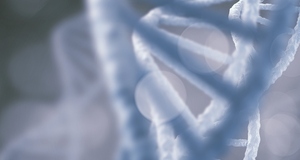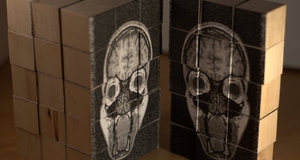The Psychopathology of Pica: Etiology, Assessment, and Treatment
By
2017, Vol. 9 No. 02 | pg. 1/2 | »
IN THIS ARTICLE
AbstractPica is a condition that has been prevalent among humans for centuries. According to the DSM-V (2013) pica is classified as an eating disorder in which an individual consumes non-food substances at least once per month, at a developmental stage in which the behavior is inappropriate, and occurs in a culture that does not sanction such behavior. Pica etiology is related to gastrointestinal distress, micronutrient deficiency, neurological conditions, and obsessive compulsive disorder. Currently there are no clinical guidelines for situations regarding pica and cases in clinical institutions often go unreported. Recommended assessment procedures include close observation by clinicians, physiological examinations in suspected cases of pica, and safe baiting. Treatment procedures can include environmental enrichment, micronutrient therapy, overcorrection, and physical restraint. The key components to prevention include observation, education, and intervention. Pica is considered to be an elusive disorder because of the changing contingencies that make up the definition of pica suitable for diagnosis. In the Diagnostic and Statistical Manual of Mental Disorders, Fourth Edition Text Revision, (2000), pica is classified as a feeding and eating disorder characterized of infancy or early childhood. According to this text (2000), a confirmed diagnosis would require that the patient must meet the criteria, which includes the persistence in the eating of nonnutritive substances for at least one month, the behavior is inappropriate for the developmental level, and the behavior is not a culturally sanctioned practice. In some cases pica can include an aversion to the consumption of food items. However, this set of criteria has been altered slightly in order to factor for recent considerations regarding the nature of pica. The fifth edition of the Diagnostic and Statistical Manual of Mental Disorders (2013) notes an important word change from the previous edition. This change was the substitution of the word “nonnutritive” with the word “non-food.” This change was important because individuals could consume products that did not contain nutrients, per say, but were still considered to be food items. A common example of this situation is the consumption of diet soda, which does not contain substantial amounts of nutrients but is still considered to be a food item. If the old criteria for a pica diagnosis were still applicable, there would be larger numbers of people with pica diagnoses which would take time away from the people who needed treatment. Due to such confusion regarding diagnosis criteria changes, the importance of the discussion of etiological theories, assessment, prevention, and treatment recommendations for pica is critical. The occurrence of pica has received extensive amounts of attention in the media in recent years. However, pica is a condition that has been plaguing people for hundreds of years. The term pica is derived from the scientific name of the magpie (pica pica) after comparisons had been noted in people and the magpie concerning the consumption of non-food items (Parry-Jones & Parry-Jones, 1992). The earliest English written accounts of pica date back to 1398, which characterized individuals as experiencing cravings for potentially harmful substances (Parry-Jones & Parry-Jones, 1992). Pica is considered one of the more dangerous of self-harming behaviors and can result in premature death (Ellis & Pataki, 2012). Throughout this extensive period of time, the definition of pica has been altered as information becomes available. Such an alteration is seemingly unimportant, but it could make the difference between someone receiving proper treatment for a condition they do not have and a person who is engaging in a dangerous behavior. This alteration could also change the demographic of individuals with pica.Pica is a condition that has received extensive media attention in the form of television series designed to entertain audiences. However, this condition has been studied by physicians for centuries in order to determine the etiology of pica. There have been several theories regarding the etiology of pica. Past research has suggested insufficient diet and nutrient deficiency, particularly iron, childhood home environments, disordered brain conditions, diseases or infections of the gastrointestinal tract, and pregnancy as conditions related to pica (Parry-Jones & Parry-Jones, 1992). This has resulted in the speculation of pica being a symptom of another condition rather than a separate condition. Currently, there are no set clinical guidelines or tests regarding instances of pica. This can be particularly detrimental to clinical settings that treat patients with conditions of which pica-related behaviors are prevalent. Without established guidelines, there would be no set method for addressing pica assessment, treatment, or prevention. Williams and McAdam (2012) suggest in clinical settings utilizing survey use, stool examination, patient observation, screening scales, caregiver interviews, and medical record examination as prevention methods. Williams and McAdam (2012) believed that if the prevention strategies were followed, this can result in proper follow-up assessment measures. Pica is more often noted in children, pregnant women, individuals with cases of iron-deficiency anemia, and individuals of lower socioeconomic status. The typical individuals whom engage in pica are typically from southern, rural regions of the United States, are Black, and have a family history of pica (Rose, Precerelli, & Neale, 2000; Kettaneh, Eclache, Fain, Sontag, Uzan, Carbillon, Stirnemann, & Thomas, 2005). However, pica is a condition that occurs worldwide, but is particularly emphasized in western and southern Africa and southern India with existing reports in Europe and Australia (Ellis & Pataki, 2012). Rose, Precerelli, and Neale (2000) noted pica being used as a component of religious beliefs, ceremonies, and healing attempts. I intend to elaborate on the different theories regarding pica etiology that have been supported by past literature. Such etiology theories include pica in regards to gastrointestinal distress, micronutrient deficiency, neurological disorders, and obsessive-compulsive spectrum disorders. The goal of this paper is to present these etiological theories in a clear manner. This topic is critical to examine because pica is a condition that has been prevalent for hundreds of years, is prevalent in many countries, and if left untreated can result in lethal consequences such as poisoning, gastrointestinal blockages, or other instances of permanent physical damage. The premise of this paper is to consider the elusive psychopathology of pica as well as assessment, prevention and treatment methods of pica. Etiological Theories Regarding PicaGastrointestinal DistressDuring incidences in which gastrointestinal distress occurs, individuals engage in pica as a self-soothing method. Typical gastrointestinal distress is the result of the exposure to pathogens and toxins within the gastrointestinal tract. Gastrointestinal distress can also result from mechanical stimulation of the gastrointestinal tract. Common pica outlets include the consumption of earth, geophagia, or raw starch, amylophagia (Young, 2011). Potential explanations for pica behaviors as a method to ease gastrointestinal distress include a way to control the pH of the gastrointestinal tract. When earth is consumed by an individual with pica the pH of the gastrointestinal tract will increase and become more basic, which may result in a soothing effect for the individual. By consuming substances such as earth, individuals would be able to reduce the bioavailability of pathogens and toxins in the gastrointestinal tract (Young, Khalfan, Farag, Kavle, Ali, Hajji, Rasmussen, Pelto, Tieslsch, & Stoltzfus, 2010). In a historical overview of pica, Parry-Jones and Parry-Jones (1992) note that individuals who were experiencing improper pH levels in their digestive tract would crave specific items such as unripe fruit, certain spices, chalk, clay, or vinegar in order to correct the pH levels. Certain cultures will encourage individuals to engage in geophagia as a method to treat diarrhea in order to reduce the rapid passage of fluids along the gastrointestinal tract. In individuals engaging in pica, clay is often consumed in order to address gastroesophageal reflux and gastric pain (Kettaneh et al., 2005). When these behaviors are acted upon, resulting in relief from gastrointestinal distress, the behavior is enforced to continue due to the resulting perceived benefits of health (Mitchell, Laycock, & Stephens, 1977). Micronutrient DeficiencyA micronutrient is a required nutrient that must be achieved through the diet in specified milligrams per day, or trace amounts. A common micronutrient deficiency that is related to pica is iron. Iron deficiency can result in situations such as pregnancy, chronic bleeding, improperly balanced diet, and impaired iron absorption (Kettaneh, et al., 2005). Von Garnier, Stunitz, Decker, Battegay, and Zeller (2008) note that kaolinite, a type of clay commonly consumed by individuals with pica, has a negatively charged surface, anions, which is compatible with exchanging and absorbing cations, which are positively charged ions, such as iron. This exchange and absorption of iron occurs in the duodenum of the small intestine and prevents the body from being able to use the necessary iron, which results in iron-deficiency anemia. In this type of situation, pica was an engaged behavior that occurred before the iron deficiency had occurred. However in situations in which iron-deficiency anemia has occurred in an individual, glossitis can be a related consequence. Glossitis is the inflammation of the tongue, which can be presented as an enlarged tongue, pain in the tongue, or the slight change of color of the tongue. In order to address the associated discomfort, individuals can sometimes engage in pagophagia, which is the consumption of ice. Individuals will use the ice for analgesic properties and often report a pleasant taste experience with ice during the time they were experiencing iron deficiency (Kettaneh et al., 2005). The pleasant feelings will often allow these individuals to continue the practice. Neurological DisorderThe foods that individuals consume can impact the overall health of their bodies. The many mechanisms that occur within the human body will influence the behaviors that are acted upon. Beecroft, Bach, Tunstall, and Howard (1998) conducted a case study focusing upon an individual who had been engaging in pica for over twenty years. The individual was a seventy-five year old woman whom had consumed items such as coins, nuts, wire, plastic, dog fur conditioning powder, and dried flowers. She equated her desire to consume the listed non-food items to be on the level of a smoker’s need to have cigarettes. She did not claim to be addicted to consuming the non-food items, but she needed them in order to ease her feelings of anxiety. She was later hospitalized in a psychiatric unit and presented herself to be a well-oriented individual. When she was presented with coins at the unit, she presented herself as evasive towards the coins and the researchers surmised that this action was due to embarrassment. The researchers assessed her cognitive function through the administration of various tasks and tests. The results indicated that she was experiencing a decrease in cognitive function and performance that is associated with the frontal lobe of the brain. Further scans indicated that she was experiencing frontotempotal atrophy. Rose, Porcerelli, and Neale (2000) support the idea that certain brain lesions influence abnormal eating behaviors. Obsessive-Compulsive Spectrum DisordersThe engagement of pica behaviors can also be related to obsessive-compulsive spectrum disorders. When pica is influenced by obsessive-compulsive spectrum disorders, the behaviors related to pica are seen as involuntary in order to serve as a self-soothing device to ease tension. Attempts to resist can result in increased levels of anxiety and distress if not addressed with the obsessive behavior to sooth the anxiety and distress. Herguner, Ozyildirim, and Tanidir (2008) conducted a case study regarding an individual who had been engaging in pica for five years. The individual was a ten year-old boy who had been consuming carpet and cloth fibers. He described his activity as irresistible and he would experience a bit of tension before consuming the fibers. After eating the fibers, he reported feeling more relaxed. He was assessed for severity of obsessive-compulsive disorder symptoms using the Yale-Brown Obsessive-Compulsive Scale. His total score was 19, out of a possible total of 40, which categorize the severity of his obsessive-compulsive disorder symptoms to be moderate. This patient was prescribed a medication common to obsessive-compulsive disorder, fluoxetine, for nine months. At a one year follow-up, he did not demonstrate any pica behaviors. This case study supports the idea that pica is related to obsessive-compulsive spectrum disorders due to pica-related behaviors ceasing in response to selective serotonin reuptake inhibitors (Bhatia & Gupta, 2007). Assessment, Treatment, and Prevention GuidelinesAssessing PicaThe assessment of pica can be a difficult act to complete, largely due to individuals not being honest with professionals regarding pica behaviors (Young et al., 2010). Due to pica being a disease that is difficult to diagnose, health professionals must proceed carefully in regards to assessment. When preparing to assign a pica diagnosis to a patient, health professionals must first determine if an individual has engaged in pica on more than one occasion and if the situation is life-threatening (Williams & McAdam, 2012; Matson, Belva, Hattier, & Matson, 2011). This is necessary for proper assessment in order to assure a diagnosis is being assigned appropriately. Williams and McAdam (2012) noted that a clinician must also identify any triggers that permit an individual to continue pica-engaging behaviors. If conducting an assessment in a secure setting, a safe baiting procedure can be utilized. Safe baiting involves the purposeful placement of non-food items that could entice a suspected individual with pica to consume the non-food items and be observed engaging in the act by a clinician or caregiver (Fisher, Piazza, Bowman, Kurtz, & Lachman, 1994). Other assessment measures can include physiological measures to examine deviations from normal measures in areas such as stool examinations, biochemical blood assessments, and an examination of the teeth. Treating PicaA comprehensive treatment plan is necessary in order for an individual to recover from engaging in pica behaviors. The severity of the individual’s pica will determine the treatment outcome. For example, if an individual is experiencing life-threatening pica, the goal of treatment should be to reduce the number of pica experiences to zero (Williams & McAdams, 2012). Identified pica triggers are components critical to the establishment of environmental enrichment of the disease (Williams & McAdams, 2012). Piazza, Fisher, Hanley, LeBlanc, Wordsell, and Lindauer (1998) identify environmental enrichment, a treatment method with the purposeful removal of reinforcing features and triggers associated with engaging in pica behavior, when combined with non-contingent reinforcement, the praise of engaging in activities unrelated to pica, to be successful in reducing pica behaviors. Depending on the suspected etiology of pica, micronutrient therapy, typically with iron, can be utilized to diminish the behavior (Young et al., 2010). Overcorrection is another method that has demonstrated successful outcomes in pica treatment (Ricciardi, Luiselli, Terrill, & Reardon, 2003). The overcorrection procedure involves the individuals with pica to spit out the non-food item when attempting to consume the item, clean their mouths out with a toothbrush soaked in mouthwash, and then engage in a positive practice act, such as cleaning. In more extreme cases of pica, physical restraint has sometimes been deemed necessary in order to cease the dangerous behavior (Fisher, et al., 1994). Preventing PicaPica can result in lethal consequences, such as malnutrition, poisoning, and gastrointestinal blockage, to an individual if continued for a period of time. In order to decrease the likelihood of such consequences from occurring, nutrition education is a critical aspect to at-risk populations, such as African tribal villages and pregnant women (Young, et al., 2010). Nutrition education can enlighten populations about the dangers of consuming non-food items as well as emphasize the importance of consuming a balanced diet. If pica is a suspected in individuals, observation and intervention are key in order to prevent the individual from making the behavior a regular occurrence (Williams, Kirkpatrick-Sanchez, Enzinna, Dunn, & Borden-Karasack, 2009).Continued on Next Page » Suggested Reading from Inquiries Journal
Inquiries Journal provides undergraduate and graduate students around the world a platform for the wide dissemination of academic work over a range of core disciplines. Representing the work of students from hundreds of institutions around the globe, Inquiries Journal's large database of academic articles is completely free. Learn more | Blog | Submit Latest in Psychology |


















